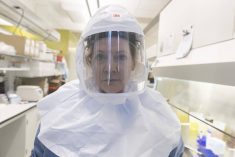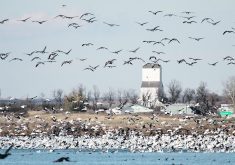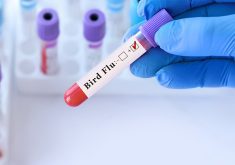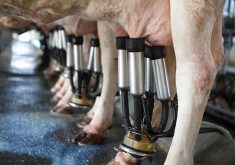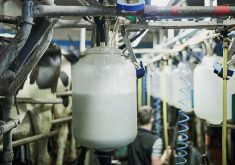Canadian Food Inspection Agency says continued negative results support view virus has not reached domestic herd
Glacier FarmMedia – There are no traces of highly pathogenic avian influenza (HPAI) in domestic milk, as far as Canadian authorities can find.
The Canadian Food Inspection Agency says the latest testing, which put 600 retail milk samples under the microscope, has not found evidence of the virus. Testing was done in collaboration with the Public Health Agency of Canada and Health Canada.
That echoes negative findings reported in May. At that time, the CFIA had tested 142 milk samples and found no evidence of HPAI or other dairy disease.
Read Also
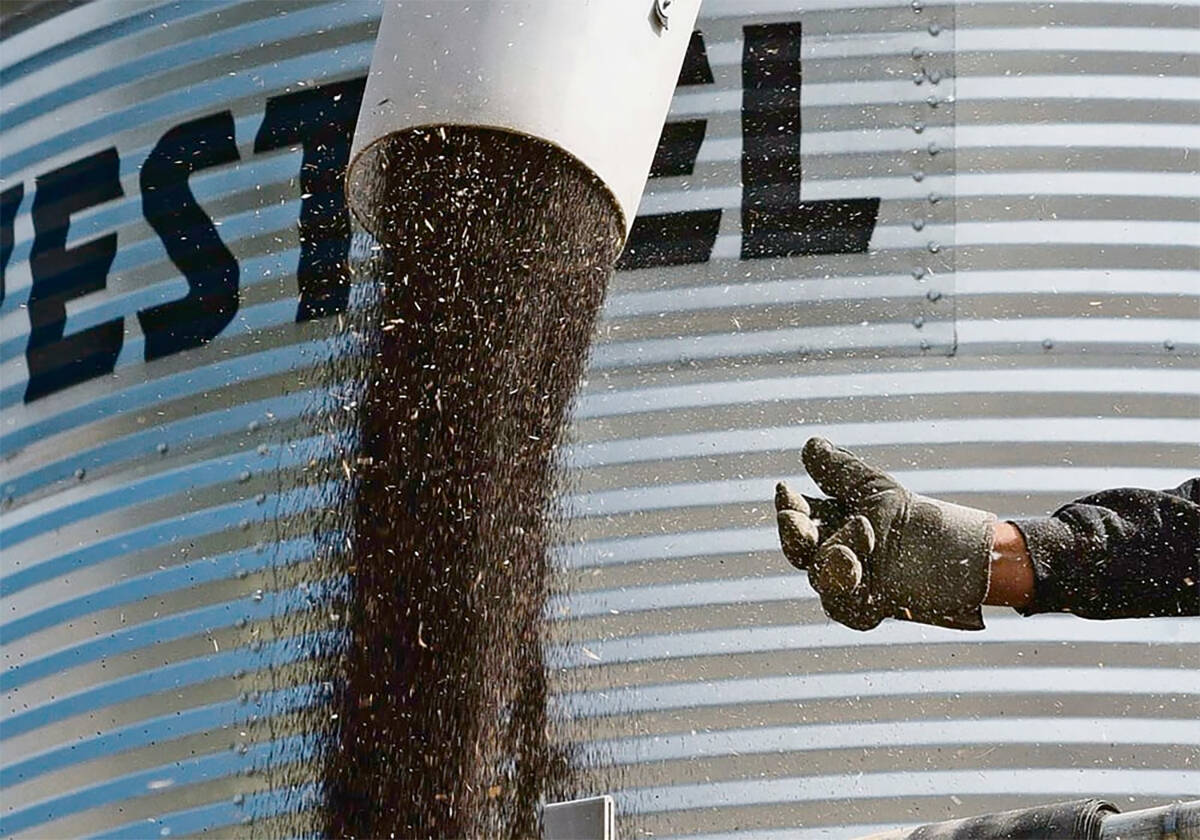
Farmers urged to be grain-safe this fall
Working around grain bins comes with risk, from farmers falling to drowning in grain: Experts have five tips to help avoid grain-related accidents this harvest.
The study used a polymerase chain reaction test — the same method used to detect COVID-19 during the pandemic — on samples across Canada, with testing regions broken into Western Canada, Atlantic Canada, Quebec and Ontario. Between 149 and 151 samples were collected per region.
The agencies tested for viral fragments of the H5N1 strain that is spreading in U.S. dairies. The United States Department of Agriculture, via its Animal and Plant Health Inspection Service, has recorded 101 dairy premises and one alpaca farm infected since late March.
Viral fragments have been found in U.S. milk. In April, the U.S. Food and Drug Administration said it had found viral traces, although no live virus, in one in five samples it had tested.
The newest Canadian data “supports current reports that the virus has not been detected in Canadian dairy cows,” read a CFIA report posted online June 18.
Another Canadian study in May and June confirmed that pasteurization renders high volumes of the virus inactive when added to raw milk. That study was conducted by the CFIA under the guidance of Health Canada.
“These findings align with similar results obtained in spring 2024 by other researchers globally and provide additional reassurance that the milk supply in Canada is safe, even if (the) HPAI virus were to be detected in Canada,” the CFIA said in a statement.
In the United States, recent research published in the New England Journal of Medicine found that some infectious virus made it past standard pasteurization if the raw milk was heavily infected. However, researchers cautioned that their work shouldn’t speak to retail milk safety, since milk from dairy farms may have a different composition or have aspects that differ from the study.
The week of June 17 was particularly busy for bird flu announcements. The CFIA updated its HPAI guidance for private veterinarians. Non-clinical dairy cows are now eligible for testing, with the agency covering lab test fees at any Canadian Animal Health Surveillance Network lab approved to test samples in domestic animals. The agency will not pay veterinarian fees for sample collection or shipment to the lab.
A milk sample is required from lactating dairy cattle and a nasal swab is necessary for non-lactating dairy cattle, the CFIA said.
Updated guidance also says that “for suspect case submissions, the private veterinarian is required to report negative test results back to the district office upon receipt.”
The same week brought news of further bird flu cases globally. Australia is embroiled in bird flu outbreaks from different strains to the H5N1 strain that is circulating in North America. On June 19, Reuters reported that an H7N8 poultry farm infection had joined the H7N3 and H7N9 strains already detected in the country.
Shayan Sharif, a professor with the University of Guelph’s Ontario Veterinary College, has been watching this strain of H5N1 as it jumped from species to species globally starting in 2020. Its longevity and persistent virility has exceeded expectations.
“Nobody would have actually expected it would infect cattle,” Sharif said. “Nobody would have anticipated that the virus would be shed in milk. And I think that was really something that caught all of us by surprise.”
Sharif applauded the CFIA and other agencies for their efforts, such as introducing testing requirements at the border for U.S. dairy cattle.
“CFIA is doing what it’s supposed to do, which is to do testing of cattle and also testing of milk. It can’t really do a whole lot more because we don’t, for example, have vaccines,” he said.
Sharif is cautious about making hard statements about the disease’s status. There’s “always a chance” it’s already in Canada, he said.
“Maybe we are not looking hard enough and, had we looked hard enough, we might have stumbled upon this virus in Canada.”
He thinks the U.S. problem is largely due to heavy internal transport traffic, although he doesn’t rule out the potential role of migratory birds as vectors. They’re most often named as culprits for HPAI spread.
Sharif suggested that paths used by wild birds and the virus’s history of poultry bird infection in Canada might be used to predict appearances of bird flu.
“If you look at the various different waves of avian influenza in Canada, you actually can recognize that it is seasonal,” he said.
“That’s why I think there is some element of seasonality to all of this, whether it’s going to be this fall or next spring or the following fall season, we don’t really know. But there’s always the chance that this virus is going to come back in different shapes and forms.”
That’s not necessarily an entirely bad thing, he added. The virus could become endemic, with high transmission but low virulence of infection. There have been some dairy cow deaths in the U.S., but most animals recover with veterinary and farmer attention.
“It doesn’t matter if it’s influenza or some other virus. Over time, viruses have a tendency to lose their virulence, meaning their ability to cause disease would be reduced quite significantly, but they will become more transmissible,” said Sharif.
COVID-19 is an example.
“It went through a phase where it became highly pathogenic, meaning it could cause severe disease, and eventually it started losing its virulence but it became quite transmissible.”
Sharif expects COVID-19 would have become endemic eventually but it was cut off before that point due to vaccination.




